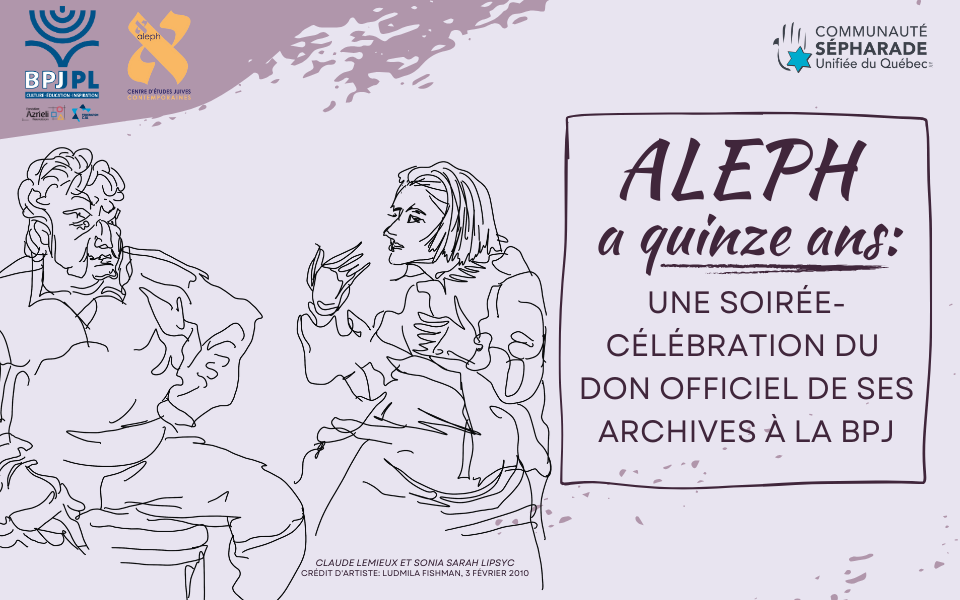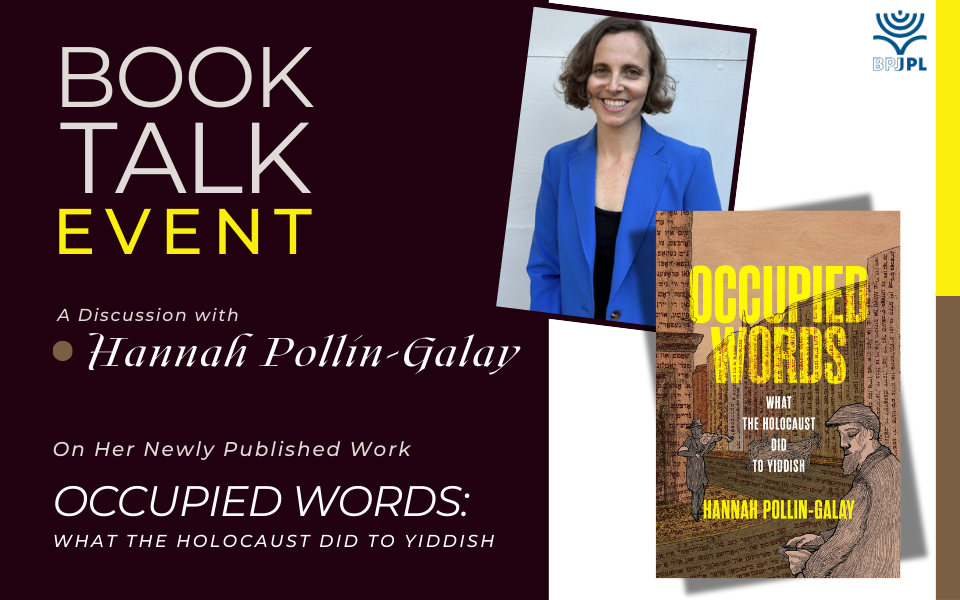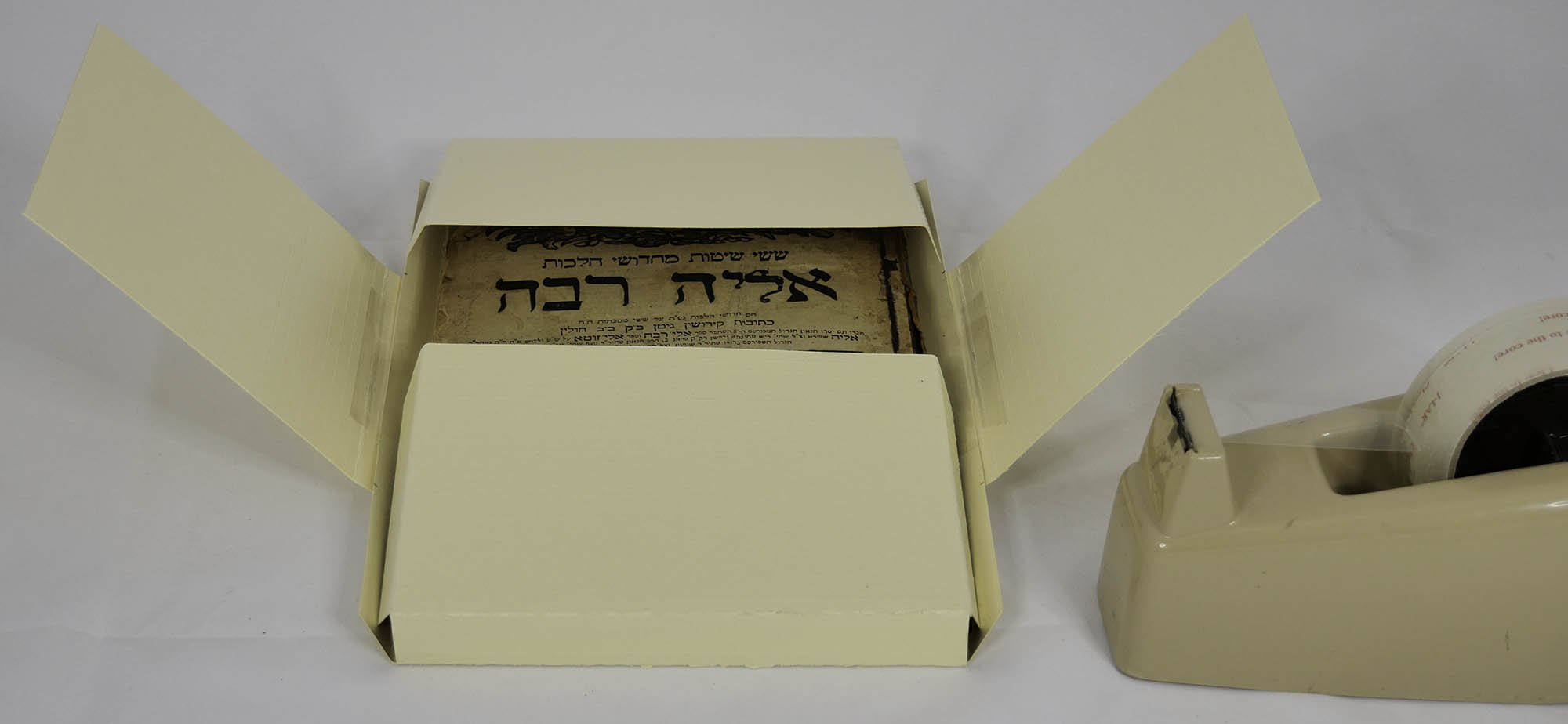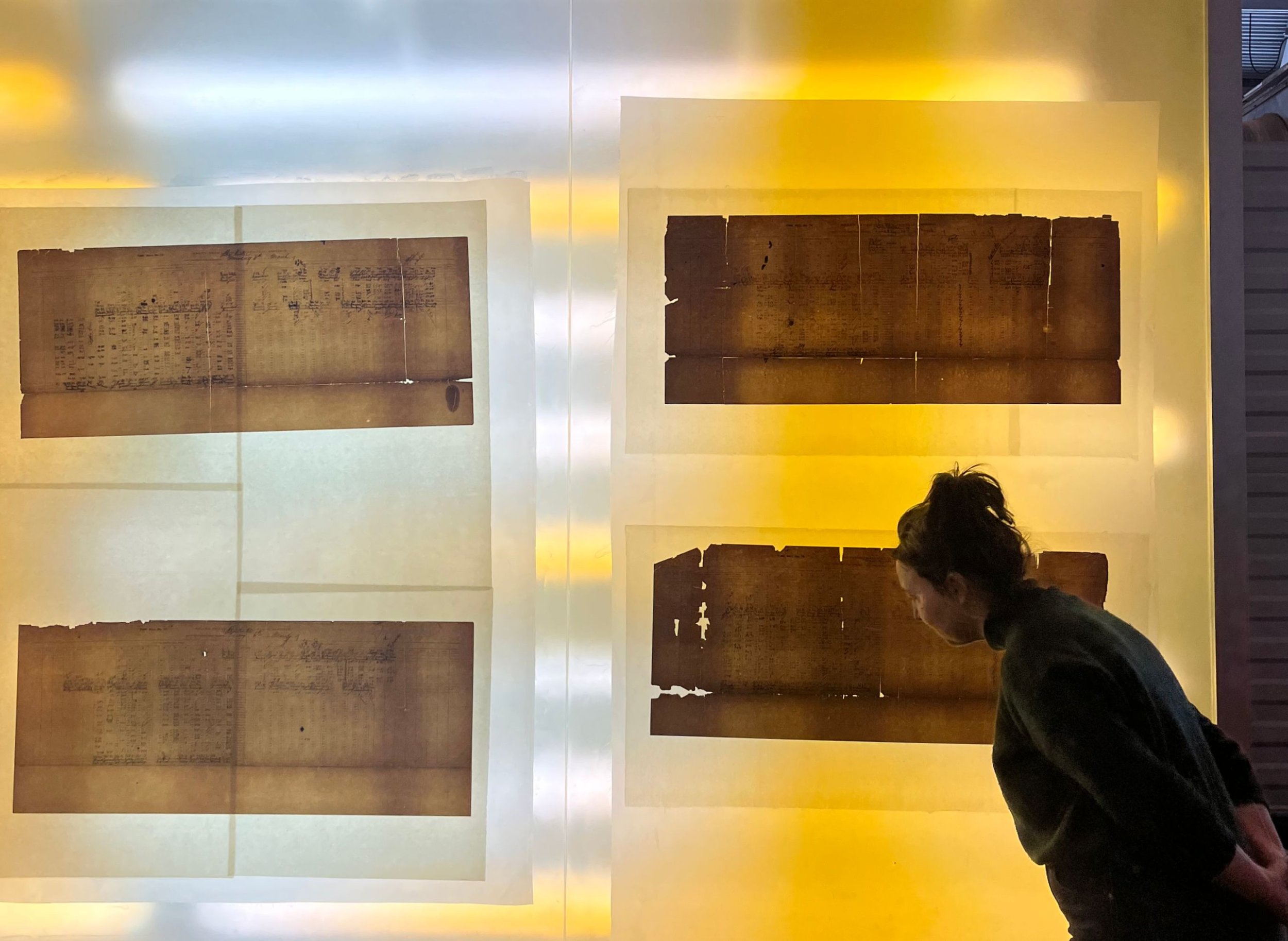FEBRUARY 2025
der zamler
JPL’S NEWSLETTER FOR ALL THINGS
ARCHIVES & SPECIAL COLLECTIONS
we’re 141 years late…
A ticket to the Grand Fancy Dress Carnival on February 7th, 1884. Courtesy of the JPL Archives, Louis Rubenstein Fonds, ID: 1168_[11]_3.
… to the Grand Fancy Dress Carnival! The $1 entrance fee may seem cheap, but that would be at least $30 with inflation. Which makes it more expensive than all of the JPL Archives events below combined. Check out the upcoming programming we have in store for you!
upcoming events
Event poster featuring an illustration of Claude Lemieux et Sonia Sarah Lipsyc by Ludmila Fishman, February 3, 2010. Courtesy of the JPL Archives, Communauté sépharade unifiée du Québec Fonds, ID: 1481-4-[106]-1.
aleph a quinze ans: une soirée-célébration du don officiel de ses archives à la bpj
Tuesday, March 25, 2025
6:30 - 8:00pm EST
Gelber Conference Centre
5151 Chemin de la Côte-Sainte-Catherine
Event in French | In-Person
In honor of the CSUQ's donation of the archives and documents of ALEPH Centre d'études juives contemporaines, join us for an evening of conversation between Sonia Sarah Lipsyc, Anne Elaine Cliche, and their invited speakers.
Event poster featuring an illustration from the Unzer Szytme, Issue 4, 1945. Courtesy of the JPL Archives, Paul Trepman Fonds, ID: 1069_33.
The JPL Presents the 2025 Babey and Paul Trepman Memorial Lecture
Unzer Sztyme: Our Voice After the Unimaginable
In collaboration with the Montreal Holocaust Museum, the Segal Centre for Performing Arts, and the Dora Wasserman Yiddish Theatre.
Tuesday, April 1, 2025
6:00pm - 9:00pm EST
Segal Centre for Performing Arts
5170 Chemin de la Côte-Sainte-Catherine
$36 In-person, $18 Student, $5 Virtual | Registration required | Event in English | In-person event | Livestream option
Unzer Sztyme, Yiddish for Our Voice, was an unprecedented publication produced in the Bergen-Belsen displaced persons camp in the months following liberation. The Jewish Public Library Archives holds one of the few known collections of the publication in the world. April 2025 marks the 80th anniversary of the liberation of Bergen-Belsen camp, so we invite you to this multi-faceted program to commemorate both Unzer Sztyme and the anniversary of the liberation of its contributors.
Join us in for readings from Unzer Sztyme by actors from the Dora Wasserman Yiddish Theatre, a one-night only exhibition featuring materials from the JPL Archives and the Montreal Holocaust Museum, and a moderated discussion between Aaron Krishtalka and Elly Trepman to discuss the genesis of the publication and their ongoing translation efforts.
Event poster for Book Talk on Occupied Words: What the Holocaust Did to Yiddish.
The Jewish Public Library presents:
Occupied Words: What the Holocaust Did to Yiddish
with author Hannah Pollin-Galay in conversation with Eddie Paul
Thursday, April 3, 2025
7:30pm - 9:00pm EST
Virtual Event
Free | Registration required | Event in English | Livestream only
The Holocaust radically altered the way many East European Jews spoke Yiddish. Finding prewar language incapable of describing the imprisonment, death, and dehumanization of the Shoah, prisoners added or reinvented thousands of Yiddish words and phrases to describe their new reality. These crass, witty, and sometimes beautiful Yiddish words – Khurbn Yiddish, or “Yiddish of the Holocaust” – puzzled and intrigued the East European Jews who were experiencing the metamorphosis of their own tongue in real time. Sensing that Khurbn Yiddish words harbored profound truths about what Jews endured during the Holocaust, some Yiddish speakers threw themselves into compiling dictionaries and glossaries to document and analyze these new words. Others incorporated Khurbn Yiddish into their poetry and prose. In Occupied Words, Hannah Pollin-Galay explores Khurbn Yiddish as a form of Holocaust memory and as a testament to the sensation of speech under genocidal conditions.
Join Eddie Paul, JPL’s Associate Director of Special Collections, and Hannah Pollin-Galay, Associate Professor of Yiddish and Holocaust Studies in the Department of Literature at Tel Aviv University, as they discuss her compelling new work on Khurbn Yiddish and its cultural history, philology, and literary interpretation.
FOR THE RECORD:
A BLOG ABOUT THE WHO, WHAT, WHY, WHERE, AND HOW (OF ARCHIVING)
One of the rare books in our Special Collections in its newly-made, custom box. Photo courtesy Taegan Schell.
How to build a rare book box
In this post geared towards our fellow archivists, our intern, Taegan, shares the steps for constructing a DIY box for rare books.
news from the stacks
Staff from the JPL Archives and Special Collections looking at train logs in the process of conservation at LAC’s Preservation Centre, January 2025.
Our team had the opportunity to tour Library and Archives Canada’s Preservation Centre in Gatineau, Quebec, and it was a great experience! It’s very exciting to see how other institutions - in this case, the national standard - carry out their preservation and conservation of historical documentation. Special thanks to the staff who took the time to show us their facilities and answer our questions. It was heartening to see how willing each staff person was to share what they were working on, and the joy that their work provided. Some highlights include seeing a leaf of a Guttenberg Bible and a rare Dutch alchemy book, the ink-splattered proclamation signed by Queen Elizabeth (pictured below), and the architecture of the building. The climate control technology was impressive, but the modular work-spaces on the top floor designed to mimic the architecture of a small town in the prairies was the cherry on top of a great field trip.
Staff from the JPL Archives and Special Collections looking at two copies of a proclamation signed by Queen Elizabeth at LAC’s Preservation Centre, January 2025.
Stanley Mark Diamond, In Memoriam
In Memoriam
Stanley Mark Diamond
WRITTEN BY EDDIE PAUL
Stanley Diamond circa 2021. Photo courtesy Owen Egan.
Genealogy-related questions have been top heavy for the library’s reference department throughout the last 10 years and responding to them has been made both easier and more difficult with the internet and the array of databases available to us; moreover, the network of experts all too willing to collaborate with us has been extensive but the challenge for us has been like shopping in a grocery that previously stocked 3 kinds of mustard but which now stocks 60. If you were fortunate enough to have access to Stanley Diamond, he knew the right mustard each time or if you didn’t, he knew someone who did.
Stanley passed away on December 18th, 2024. Dozens of bios are scattered throughout the internet detailing his earlier life as a successful entrepreneur, his path to genealogy through his discovery that he was a carrier of the beta thalassemia gene in the late 1970s, the creation and guidance of his work through JRI Poland and the Jewish Genealogical Society of Montreal, and his active participation in international genealogy conferences (and most recently, as an associate of the L’Dor V’Dor foundation. His work in helping people converge with unknown areas of their past established his expertise as a reliable voice and a distiller of genealogy infoglut facilitated by the internet. When, after a week of searching and trying to connect the dots failed us at the library, a phone call or email to Stanley returned the missing link within a few minutes -- usually accompanied by additional details the researcher hadn’t even asked for in the first place; this allowed us to learn Stanley’s tricks and methodologies. A call to Stanley meant being treated to one of his recent successes: an anecdote that invariably centred on two people separated by thousands of miles and decades who, as he discovered, were related to one another either through adoption or marriage kept secret from the family. Stanley’s work changed more lives than one can imagine, provided closure to people who lived with lingering questions.
Two incidents come to mind: In the mid-1990s, a frightened elderly man “Laszlo” was led into the library by a volunteer from the Montreal Holocaust Museum. On March 19th, 1944, the Nazis occupied his hometown of Nyíregyháza in Hungary. On Passover (April 17), SS units herded Jews from the town and the thirty-six surrounding villages totaling 11,000, into the ghetto. Laszlo, then 4 years old was given over to a non-Jewish couple who raised him. After the Hungarian Revolution in 1956, he emigrated to Montreal, eventually married, and raised a family on Montreal's south shore. His wife had insisted that he leave the past behind: his trip to the MHM was made without her knowledge. Following his visit, he was led in by a volunteer and in halting English, he explained that all he wanted to find out was what had happened to his parents. He refused to give his phone number while we were to conduct our research. He would return in 3 weeks’ time for news.
For the next 2 weeks, we searched genealogical databases, consulted with experts in Jewish genealogy, emailed officials in Hungary and Israel, and finally, it was on Stanley’s advice that we were led to an association of Nyíregyháza survivors in Israel. We contacted them with the names of Laszlo's parents, and within a few days, received a copy of his parents’ death certificate, as well as a detailed listing of the names of inhabitants of Laszlo's quarter, where they had been deported and when they had perished in Auschwitz. Consider that these were in the days prior to Yad Vashem's database of Holocaust victims. When Laszlo returned, we presented him with a large file consisting of our research. He took it over to a study carrel and read through it quietly. We never saw him again but what ended up as routine research on our part allowed Laszlo to close a 40-year breach in his life.
The second occurrence happened in 2020 and again in 2022 when we ran genealogy workshops with young students at JPPS-Bialik. The idea was to get them talking to their parents and grandparents, scan our legacy issues of The Montreal Gazette, and create a family tree. The first class was given by Stanley and Gary Perlman, an IT specialist who amongst other things, has devoted part of his retirement life to photographing the gravestones of Montreal’s Jews and linking them onto a vital genealogical database, the JewishGen Online Worldwide Burial Registry. It was in that class that we encountered a taste of the kind of work for which Stanley was known. I had brought a collection of four printed volumes of genealogical tables that had been compiled and donated to the library several years earlier by someone
who came to the library one day. Despite never having met me, he claimed to know me and members of my immediate family. As it turns out, he did; he was related by marriage through another branch of my grandfather’s family, and he needed some additional details from me to fill in some blanks.
I showed these books to the students and after I had finished speaking about how far some genealogists will extend their research back through several generations – in my case the Litwin Family – one student at the front of the class piped up, “Hey -- I’m also a Litwin.” Apparently, my newly discovered young third cousin had done his own family tree before the assignment was even handed out and had gone back on his own several generations without knowing that these books existed.
Diamonds take between 1 to 3 billion years to form. Stanley’s work was a testament to patience, and a selfless understanding of how connections sustain communities. The JPL will miss him.
recollections with the jpl podcast
Cover art for recollections with the JPL.
Der zamler is a Yiddish term meaning “the collector” and is related to the verb zamlen, which means “to gather.” In using this name, we join a long history of people dedicated to gathering and preserving Jewish culture around the world. A heartfelt thank-you goes to Sam Bick for the initial idea and to Anna Fishman Gonshor for providing the cultural context.
All non-archival photography, unless otherwise credited, by staff of the JPL Archives.
Please click here to support the work of the Jewish Public Library.
subscribe
Not registered for our monthly newsletter, der zamler? Sign up for insights into JPL’s Archives and Special Collections.
Jewish Public Library
5151 Chemin de la Cote-Sainte-Catherine
Montreal, QC, H3W 1M6
Canada











